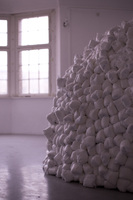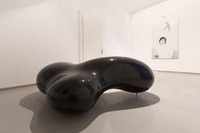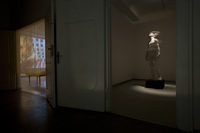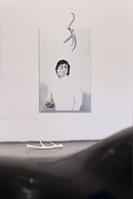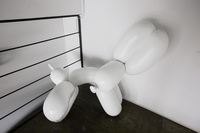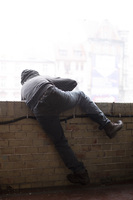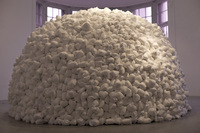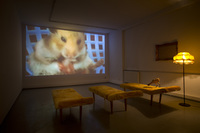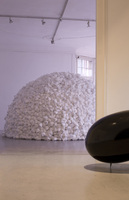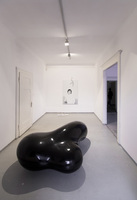Kopernik could not be a woman. Although the Renaissance is perceived as a breakthrough period with respect to human dignity and liberty, contemporary women-researchers contest the view of the 19th century art historian Jacob Burckhardt, a specialist in that epoch, who considered the position of men and women equal in the Renaissance – nothing could be more wrong, they claim.
Linda Nochlin argues that “the same processes that opened up new possibilities for men in the Renaissance, especially the strengthened role of the state and the advent of Capitalism, affected the situation of women in a negative way as they deprived them of their share of authority which they had enjoyed under feudalism.” In 15th century Florence, daughters were no longer sent to school – education was replaced with an ersatz that aimed to prepare women to marriage or convent life. At the same time, besides training in reading and writing, the curricula of public schools also encompassed such disciplines as mathematics and arithmetics. Gaps in education deprived women of their potential to explore the basic principles of the world’s structure and develop an interest in science and art. Thus, they had to resort to intuition in their cognitive processes. The term “Renaissance man” evokes the image of a male, while renowned women artists, women scholars do not receive a mention in school textbooks. For the domain of women was the private sphere, and they were not allowed even to appear in the windows of their houses. Women's confinement to the home sphere finds confirmation in Leon Battista Alberti's treatise On the Family, which sets a humanistic model for women to follow which is founded on modesty, innocence, submissiveness, eternal faithfulness, care for her husband and family. According to Alberti, the “beauty of mind,” one of the main woman’s qualities, consists in “good conduct and virtue.” Against the background of the art historical concept of the Renaissance as a unique period in science and culture being derived from the lives and achievements of men, a Polish contemporary artist tells the story of the Renaissance from the perspective of women. Dorota Hadrian adopts a perverse approach to the icon of Polish Renaissance, Nicolaus Copernicus, and the name of the breakthrough “male epoch”: the artist develops a personal story, which is, at the same time, a universal narrative devoted to today's everywoman. Her intimate universe is a sphere of revolving planets-chapters that represent the most important life stages so far: maternity, relationship and the gradual discovery of oneself as a woman – strong, sensual, and independent. Still, the central figure is that of man, a symbolic phallus. It is the centre around which everything else revolves.
In the artist’s sculptural interpretation, the figure of Copernicus is no longer synonymous with Renaissance domination. If Hadrian lived and worked in that era, she would defy the definition of “womanhood,” since creativity was the domain of men; it was them who authored outstanding art works. Women were to concentrate on the home sphere, providing food for others and embellishing reality. In art, their role was limited to that of muses and models. Hadrian’s aim is to reverse the relation between the subject and the object. In her work, it is the man who becomes the viewed object. The woman acquires agency and creativity; she can look, observe, and judge. In the Renaissance, a male nude representation of Nicolaus Copernicus would have been unthinkable. Especially one created by a woman – an act that would have defied all norms of patriarchal culture. After all, it was only at the beginning of the 20th century that women obtained the right to paint male nudes at art academies, which had previously been considered against the norms of morality. A reversal of the relation established in the Renaissance between the artist and the model came as a breakthrough in women's history of art. For centuries, it was women who posed for male artists. Hadrian addresses this division and finds a two-fold way to transgress it. Her nude “Renaissance man” can be “viewed” from every side owing to a mechanism that slowly spins the figure around its axis.
In the exhibition Renaissance, Dorota Hadrian taps into a range of different media, yet the most prominent position belongs to sculpture. The artist uses sculpture to transform and play with the cultural stereotypes of womanhood. Addressing the autobiographical tradition, Hadrian criticises the myth of the Polish Mother, approaching popular culture in an attempt to “release the burden” of grand symbols, succumbing to a certain kind of carefreeness, pleasure, affirmation of time for oneself, while deeming painful moments “bygone.” Following the reflection of Prof Jolanta Brach-Czaina, who remarks that “the everyday is the basis of our existence,” the artist tells the story of a world full of concerns that is ascribed to women: sometimes banal, situated between art and household duties – when a sudden need occurs to interrupt work in order to change the baby's diaper.
Dorota Hadrian (b. 1984 in Katowice) – visual artist. Hadrian studied at the Faculty of Sculpture and Graphic Art of the Academy of Fine Arts in Cracow and currently pursues her PhD studies at the Faculty of Art of the Pedagogical University of Cracow. In her art, Hadrian engages in a polemic with popular culture, Camp, aesthetisation of phenomena that occur in social life. The artist’s work focusses on the phenomenon of the object as a carrier of meanings that determines the image of the modern-day human condition. Hadrian’s main artistic media are sculpture, video and painting. Lives and works in Bytom.

